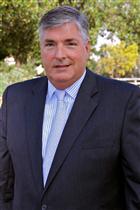
Greetings—
In a lunch meeting this past week, many of the key partners who hold the future of our children in their (institutional) hands, gathered to launch a new and ambitious initiative, Goal 2025.
The goal is that 60% of our population will have achieved a high quality degree, certificate or other credential by 2025. This level of education and training is increasingly what will be needed to succeed in a globalized world.
Fresno one of 75 communities across the US
Supported by the Lumina Foundation of Indianapolis, Fresno is one of 75 communities across the U.S. that has taken on this challenge. The Fresno Compact and the Central Valley Higher Education Consortium will lead and coordinate the effort, together with those who signed up yesterday for the work of a decade. We support these goals.
Paths beyond high school diplomas
This endeavor represents a commitment by institutions to do what is often hard: align their systems in a way that connects the dots on improving outcomes for the region’s children. Several keynote speakers, including Michael Hanson, Superintendent of Fresno Unified School District and Joseph Castro, President of California State University Fresno, spoke of the importance of investing in the skills necessary for graduates in our region to succeed. Fresno State, with its huge percentage of first generation students, has become a potent symbol of the transformative opportunity provided by education. First generation students are powerful role models for thousands of families who believe in a better future.
Private universities like Fresno Pacific and the newest branch of the UC system, which announced a $1 billion investment in expansion at the new Merced campus, are also important players in these efforts. So too are our community colleges - certificates, training and skill building at the community college level or the work site, are increasingly important in connecting students to jobs. These are all vital partners in this work.
Work to be done
There is progress to celebrate, but work to be done. Some have estimated that the current generation of school children will face a workplace where 90% of the jobs will require some training after high school. Yes, 90%!
And yet half of our population do not complete high school or advance beyond the high school diploma. Their options to participate in a thriving global economy are severely limited.
We believe that this remains one of the great challenges facing this region, where a lack of resources often challenges the already difficult job of educating students. With significant percentages of families living at the poverty level, ensuring that students are able to learn is almost as important as what they need to learn.
New ways of working across the transitions
A panel of leaders from local community colleges, UC Merced and Fresno Pacific spoke of new ways of working together - namely leveraging the resources of institutions to make transitions easier and connections more effective. Linking what students study to what employers need has been a consistent cry as our education systems and our job providers try to close the gap between who is educated and who is trained to succeed.
Some of this requires realigning priorities and budgets, while some may require rethinking what is taught and when. There is no silver bullet, as Richard Kriegbaum, President, Fresno Pacific University noted - it is a complex set of variables that need to be seen both holistically and individually.
The stakes are serious
The stakes are simple, profound and serious: will our children have the skills to succeed in the workplace they will inherit? Can our institutions fulfill that fundamental responsibility, to ignite the flame to thrive? How do our families, communities, neighbors - and the village it still takes - raise a child successfully?
Superintendent Hanson noted that our public institutions need to be uncommonly good in delivering their work. They are bulwarks of our society - far too many rely on them for advancement for us to permit them to fail. He also noted that while it is important that high school diplomas are awarded, the diploma needs to be a destination to somewhere else – a job, certificate, training, or a university or college degree. It can’t be an end in itself any more.
Community Foundation donors invest in future students and skills
At the Central Valley Community Foundation, our donors invest in the next generation in many ways – through scholarships and providing first jobs, through funding college readiness programs in Reedley and Dinuba and by supporting the next generation of pharmacists at California Health Sciences University. We are working with others to sustain the Cradle to Career partnership and building capacity from 0-18 months through kindergarten readiness, grade level reading, 5th and 8th grade math proficiency and the preparation for college and career - these are all elements in this new initiative with such promise for our region.
We are also investing in measurement systems like the Fresno Scorecard. By tracking community wide data, we can chart our progress toward the changes embodied in the Goal 2025 approach. It is a pure example of how working together we can move a community forward, so that a college and career ready culture in our schools leads to greater opportunity.
We can chart a different future
We know that one of our greatest assets is the people who work hard to make a better future for this and the next generation. One of our great opportunities is to chart a different future for Fresno, one where we can become a hub for California’s future that is a sum greater than its undervalued parts. Supporting a career ready culture is a powerful component towards that end.
We think that is a pretty good investment to make. Please join us and the others who are committing to a more successful Fresno within the next decade.

Comments